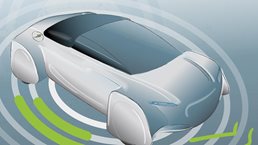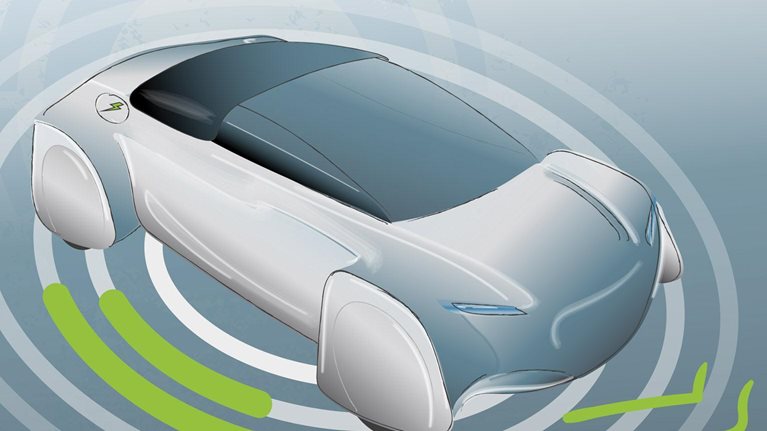The driverless car is coming, but significant questions remain. Will consumers actually want to cede control of their vehicles? Can autonomous cars be truly safe in a world of variable driving conditions and human error? And what could it all mean for the future of the auto sector? In this episode of the McKinsey Podcast, senior partners Hans-Werner Kaas and Detlev Mohr talk with McKinsey’s Luke Collins about how car manufacturers are responding and whether the art of driving will disappear.
Podcast transcript
Luke Collins: Welcome to the McKinsey Podcast. I’m Luke Collins, an executive editor with McKinsey Publishing. Today we’re talking about cars and, more specifically, the future of the automotive sector in a world where the fundamental relationship between consumers and the act of driving is changing.
Joining me today are two leaders in McKinsey’s automotive practice, based in two of the world’s most iconic automotive cities. Hans-Werner Kaas is a senior partner in McKinsey’s office in Detroit, the cradle of the United States automotive sector. And Detlev Mohr is a senior partner in our office in Stuttgart, Germany, close to where Karl Benz, in 1885, invented the automobile. Hans-Werner and Detlev, thanks so much for being here.
Hans-Werner Kaas: You’re welcome, Luke.
Detlev Mohr: Welcome.
Luke Collins: Let’s start with a subject that has never been very far from the headlines for the past couple of years: autonomous vehicles, or self-driving vehicles. We can get into some definitions around what a self-driving vehicle is, but the bottom line is early this year McKinsey predicted that up to 15 percent of new vehicles sold by 2030 could be fully autonomous. Hans-Werner, what exactly does that mean?
Hans-Werner Kaas: Thank you, Luke. According to the definition of Level Four Autonomy by NHTSA, the National Highway Traffic Safety Administration in the United States, it means that a vehicle can operate under any condition, regardless of weather, or regardless of potential constraints in the infrastructure in the surroundings, fully autonomously, without the intervention of a driver.
What does it really mean? Obviously the technology is the first question, which has to be resolved. That requires advanced-sensor technologies, but also multiple-sensor technologies. And frankly, there are still technological barriers, which we will need to address.
Second, obviously, regulation. Regulation has to define very clearly under which infrastructure conditions one can operate such vehicles. And third, in my view what is often overlooked, is actually the acquaintance and the acceptance of autonomous solutions by the consumer.
We as individuals need to feel comfortable to actually cede the control of the vehicle to a set of very intelligent processors and sensors and, frankly, underlying software. That last point, I think, Luke, is very frequently overlooked.
Luke Collins: Yes, I was going to ask Detlev’s opinion on this, because a lot of people like driving. They really like driving, and the idea of handing control of your vehicle to a computer, for example, seems not ideal from a safety perspective, at least, intellectually. And not ideal from the perspective of not enjoying driving anymore.
Detlev Mohr: I think for most consumers, it will be important to have choice. All of us know situations like, for example, in the morning when it’s rush hour and you’re in a big traffic jam, driving is not really fun. If you have an autonomous driving system, that could really improve your lifestyle. You could be reading, you could be relaxing.
On the other hand if it’s a great day, it’s a weekend, and you can drive in the countryside and have real fun, then of course you want to drive yourself. So, bottom line, my sense is most people will love the choice and decide, depending on their personal mood, and the traffic situation, when they will use the feature and when not.
Luke Collins: It strikes me that in an ideal world, the safest conditions for autonomous vehicles would be one where every single vehicle is autonomous. And obviously, that’s not realistic. We’re going to have a situation where some people enjoy driving, they continue driving, they don’t trust computers, for example. And you’ll have some people who quite happily hand over control over their car.
Is it possible for manufacturers and for the technology—ensuring that the roads are set up a certain way, that there are signs that are set up a certain way—to transmit the data that’s necessary to ensure the vehicle is safe? Can we strike that balance?
Would you like to learn more about our Automotive & Assembly Practice?
Detlev Mohr: I think that’s exactly the technological challenge a lot of manufacturers are working on. When we get to Level Four driving, these cars have to deal with many, many cars that are still without the technology and are driven by ordinary people.
There needs to be sufficient sensor technology, sufficient computer power within the car, and computer algorithms that detect out-of-picture, out-of-sensor data, real-life traffic situations, and give the right reaction to the car. That is the technical challenge, and manufacturers are working hard on it.
That’s why we will probably see Level Four capabilities will be first in road and traffic situations that are easier. So imagine you have a highway with separated lanes. You have great weather. That is much less complicated than having a small city with lots of small roads—let’s say, here in Europe—and bad weather conditions. But with more and more driving experience, and learning of the system, and improved technological powers, we will see more and more situations that can be taken up by the system.
Luke Collins: This obviously pulls a lot of automotive manufacturers into fields that traditionally they wouldn’t have been involved in. What kind of things are car companies now doing to ensure that they have the technological prowess that they need?
Hans-Werner Kaas: There are a common set of elements all of them pursue. I think point one is you do need to have a very clear technological architecture defined under which you really want to make autonomous vehicles work.
What that means is a multiple sensor technology as input. Multiple-sensor technology, to give you an idea of what is really behind it, could be camera-based sensors, which are detecting obviously visual pictures of our surroundings. It can be radar-based pictures. It can be light-based pictures. It can frankly even be ultrasonic-based pictures or inputs.
And the critical point number two on that technological architecture is what experts call sensor-fusioning. How do you actually compare and reconcile different sensor input into the software algorithm? Could be simple things like, "At which speed is an obstacle moving? Is it moving away from you? Toward you? Alongside you? Sideways to you?"
And that then obviously provides a set of instructive orders to the vehicle: turning the steering wheel, accelerating, or braking. That type of processing has to happen in real time. And “real time” means that can be a tenth of a second.
Many original-equipment manufacturers (OEMs) do invest organic resources, which means, frankly, that they are expanding and hiring the right technological expertise and engineering. But also engineers that are capable of systems integration, which can marry, in simple terms, the hardware with the software.
They are also making significant investments in prototypes and testing. Testing can be in defined and confined environments, but it can sometimes also be on open roads. You can imagine that the breadth and depth of technological expertise required is hardly to be found in a single company, even though we talk about really significant, large companies, in the case of auto companies. But certainly the technology companies have a word to say in that.
And last but not least, there is a very rich setup of start-ups and small companies that own proprietary expertise in the different fields of technology.
Luke Collins: One thing I’ve always actually been curious about is the extent to which this effort, which it seems all current car companies are now on board with, is being driven by demand from consumers as opposed to simply a desire of car companies?
Detlev Mohr: I’d say it is mainly car companies thinking through, “What could technology do, and how could technology deal with maybe underlying desires of consumers to spend their time in a different and maybe more productive way?” But also additional benefits that could derive out of it; for example, from an insurance point of view, there could be less traffic accidents.
I would say it is more supply driven and assessing the technological possibilities versus customers crying for this product today. But, from my point of view, this is also pretty common in many tech areas where, in a way, innovation has to provide or has to create markets—and is basically tapping into unmet or latent demand.
Hans-Werner Kaas: There are, in our view, four major forces of disruption happening, and the unique thing is that they’re happening in a simultaneous fashion. Today, we talk about electrification of vehicles. Obviously, that is not a new, but I would say a still-relevant force of disruption in terms of a more efficient, environmentally sustainable power train.
Number two, we talk about connectivity or digitization. So, with wireless technology, the amount of information being able to be transferred between different constituencies, it could be a car, a third party, could be between two cars, et cetera, obviously opens up very new technological opportunities and possibilities.
Third, it is about what we call advanced driver-assistance systems, leading the pathway towards autonomous vehicles. Last but not least is mobility. There are many more diverse forms of mobility. In other words, how do you get from A to B?
The former three technological forces I mentioned: they could accelerate mobility, both the adoption and diverse forms of mobility, but they’re not necessarily needed to actually push new mobility forms. That is very important to note, to understand those inter-relationships.
So what are carmakers doing today? On the one hand you see the spectrum of carmakers who are cautiously exploring in their own way—they call it sometimes experiments, they call it sometimes small pilots—which of those future mobility forms might be willingly adopted by consumers. That is one end of the spectrum.
You see other carmakers making actually clearly bets already today, including with equity investments and investments into partnerships. In many cases, they involve capital. In many cases, they involve intellectual property-sharing. But they don’t have to. Or it can be a combination of both.
So you see a full spectrum of engagement by carmakers today. And frankly, if I stretch it a little bit further, when you look at technological players—whether a Google, an Apple, or mobility providers like Lyft or Uber—they also reach out to the incumbents, and understand what type of domain knowledge in the auto industry is critical to actually define an offer of viable services.
Detlev Mohr: The relationship between the consumer and the automobile is getting more diverse. We see today that, especially younger people are much, much more looking for mobility services; maybe are less keen on driving a car.
The traffic situation in many major cities is very problematic: lots of congestion, not to mention the environmental situation. So big cities are looking for opportunities to have less or better-flowing traffic. And at the same time, they also try to free up additional land and today, in many cities, a very significant portion of the land is occupied by parking spaces.
Luke Collins: Is one of the big implications of that for car manufacturers that they will sell fewer cars?
Detlev Mohr: No, actually. If you do a model calculation, cars in car-sharing or e-hailing services have a much, much higher amount of kilometers that they run. So the lifetime of such a car is significantly lower. And if you calculate it through with realistic use cases, the number of cars you sell is probably pretty much the same, but the life cycle is much shorter.

Disruptive trends that will transform the auto industry
Luke Collins: So what is the business model of the automotive company 10, 15, 20 years from now?
Detlev Mohr: First of all, it’s still about building cars. Obviously. But, in addition, they will have to provide services around the car and they also, at least some of them, will go into offering a range of this mobility services to fully serve the customer in all the different use cases that they have.
Hans-Werner Kaas: I think what we will see if you fast-forward maybe 10 years from now, 15 years from now, is a hybrid of offerings. So, on the one hand, yes, as Detlev said, designing, manufacturing, distributing, servicing cars will still be a core business for carmakers or OEMs. Because even the new mobility providers, they will need cars.
But what I would emphasize is, that car companies will at least be aware or engage in an much broader, let’s say, perspective on selecting and picking the right services. They go beyond the car itself in terms of the more core service around the vehicle, in terms of maintenance, support for service for the vehicle itself.
But really offerings, which could either be tailored offerings of vehicles for mobility providers, could be partnerships to service and support mobility providers. They could, frankly, in some cases also, get engaged themselves in offering and operating mobility services. The trick will be to understand to which degree that is mutually reinforcing the own core business you have. And could that indeed create new bonds with customers in terms of customer loyalty as an example?
Or provide you significantly better consumer insights, which, in turn, again, would allow you to design, engineer, developed vehicles, which are much more fit for use. And fit for use means different type of use cases. These type of customer insights, I think will need to be developed by OEMs in a much more sophisticated way compared with what they have done today.
Luke Collins: This is an interesting one, because, as you know, pretty much every automotive manufacturer’s website allows you to build a vehicle and to get it in the colors you want, and the interior you like, and add all your various modifications to it. Yet none of those websites allow you to click a button to just buy the car.
Detlev Mohr: As we have laid out in our research on the future of automotive retail, we see some strong changes in the next decade or so in the retail landscape. What we see is that there will be a hybrid of traditional dealer formats, because many customers still want to see a car at least at some point in the customer decision journey.
The physical experience will stay important. On the other hand, there will also be a need for digital interaction. What we see is a hybrid, so that there is a seamless customer decision journey in the digital arena, combined with the physical interaction with test-driving and touch and feel of the car.
Hans-Werner Kaas: I think we should never forget, Luke, that the purchase of a vehicle is, from a standpoint of the price you pay, the second-most expensive purchase for most consumers after the purchase of property or a house. So will it be completely digitized in terms of information, inquiry, evaluation, and transaction? No. However, will digital and all the supporting devices like product configurators play a much bigger role? Absolutely.
Detlev Mohr: And obviously there would also be some real innovative options to give customers even more or better offerings for their needs. So just imagine that an automotive company offers you that with a fixed price you pay every month, you get the choice to have two or three different car models during the year.
So, for example, you have an SUV in winter, a convertible in summer, or, for some special reasons, a third version—all from one manufacturer, packaged into a rate that you pay every month. That could be very attractive, at least for some customer segments.
We will see that the next 10 years will bring more changes to the automotive industry and the whole ecosystem than we have seen probably in the last 50 or even 70 years.
For automotive players—be it traditional ones, be it suppliers, but be it also a number of new entrants that we will see and are already seeing from the tech world, or from new, innovative service solutions—it is very, very interesting times. If we look back in ten years, we will see that industry has massively changed.
Luke Collins: I was just thinking how funny it is, because if we’d had this conversation a couple of years ago the entire discussion would have been around electrification of vehicles, which now seems to have completely been swamped by self-driving vehicles and all these innovations you’re talking about. So just to finish then, I’m guessing, Detlev, you probably have a big German car. Hans-Werner, you’ve probably got an American pick-up truck or something. What do you see yourselves driving in 10 to 15 years from now?
Detlev Mohr: Definitely still a German car! I would assume that I have one fully electric vehicle, but I also will assume that I have a sporty car with a traditional combustion engine, just for fun.
Hans-Werner Kaas: So Luke, first of all, for the record, I do drive today both German and American cars. What will I drive in a few years from now? I think I’m very close to where Detlev is. I certainly will have an all-electric vehicle—there’s no question about it.
An electric vehicle can actually produce a lot of fun for driving because, without getting technically too deep here, the instant torque delivery provides a quite unique acceleration experience. And the handling, if engineered well in terms of the weight distribution, is a quite unique experience.
At the same time, there’s always need for utility vehicles, where you do need certain amount of space to get from A to B. All of us will engage more in mobility services, which are needed in certain circumstances. So it will be what I call a portfolio of ownership, and that is I think what will characterize me in the future—and also, I think, many consumers.
Luke Collins: All of us either drive or we are passengers in vehicles, so this is just a fascinating issue. Thank you very much, Hans-Werner and Detlev, for your time today. McKinsey’s automotive practice publishes extensively on all topics related to the industry. You can find those articles, reports, and research on McKinsey.com.



